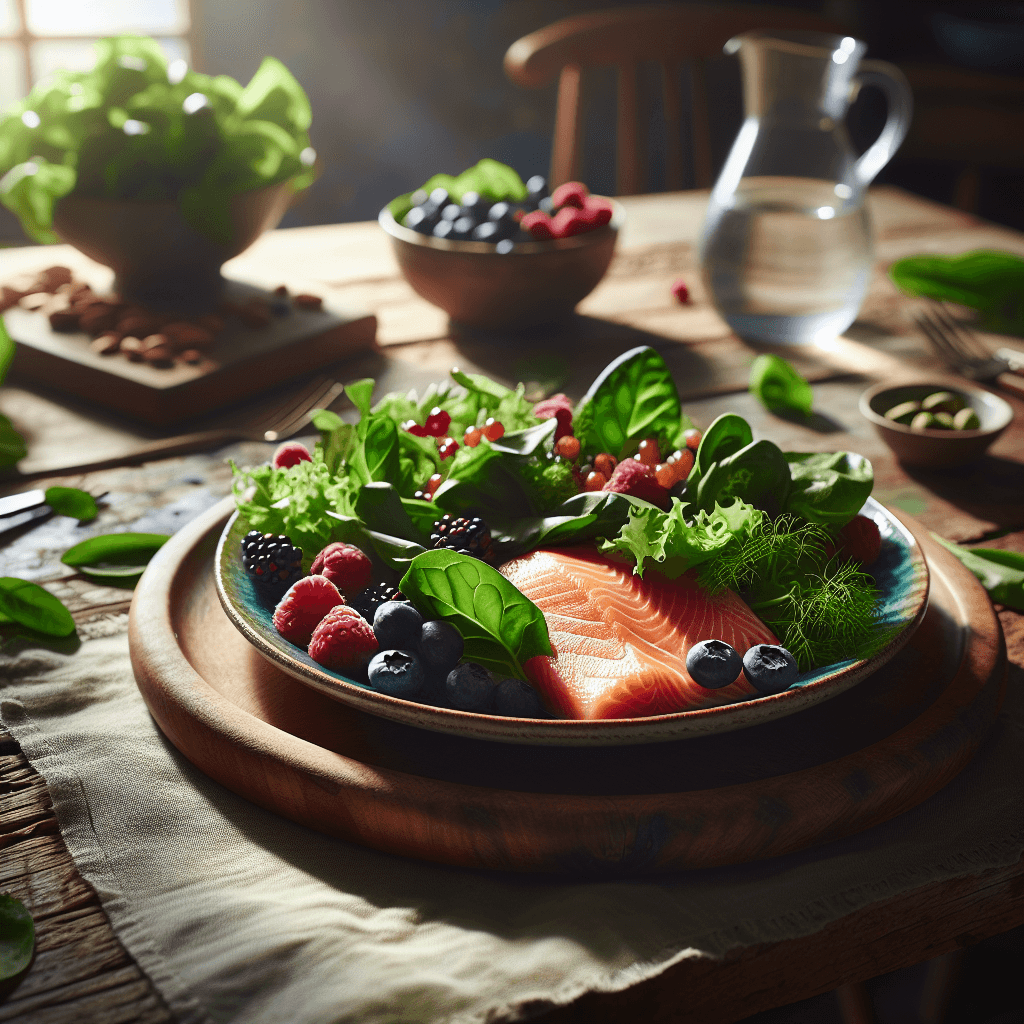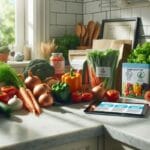Three Foods Type 2 Diabetics Should Eat Daily to ‘Reverse’ Diagnosis
Published by: Bristol Live Health Team |
Type 2 diabetes is a chronic condition affecting millions worldwide, but recent research and expert advice suggest that the right dietary choices can play a significant role in managing—and even reversing—this diagnosis. According to a recent article by Bristol Live, incorporating specific foods into your daily diet can help lower blood sugar levels, improve insulin sensitivity, and potentially reverse type 2 diabetes.
This comprehensive guide explores the three foods every type 2 diabetic should eat daily, supported by the latest scientific research (2023-2024), and offers practical tips for individuals with food sensitivities and diverse dietary preferences. We’ll also discuss how modern food scanning apps like Food Scan Genius and Yuka can help you make informed choices at the supermarket.
Understanding Type 2 Diabetes and the Power of Diet
Type 2 diabetes occurs when the body becomes resistant to insulin or doesn’t produce enough, leading to elevated blood sugar levels. While genetics play a role, lifestyle factors—especially diet—are critical in both the onset and management of the disease. The American Diabetes Association and Diabetes UK both emphasize that dietary changes can significantly impact blood sugar control and even lead to remission in some cases.
According to a 2023 review published in Nutrients, dietary interventions focusing on whole, nutrient-dense foods can improve glycemic control, reduce inflammation, and support weight loss, all of which are essential for reversing type 2 diabetes.
Three Foods Type 2 Diabetics Should Eat Daily
Bristol Live highlights three key foods that should be staples in every type 2 diabetic’s daily diet. Let’s explore each, the science behind their benefits, and practical ways to incorporate them—no matter your dietary needs.
1. Leafy Green Vegetables
Why They Help: Leafy greens such as spinach, kale, Swiss chard, and collard greens are low in carbohydrates and calories while being rich in fiber, vitamins, minerals, and antioxidants. Their high magnesium and vitamin C content have been shown to improve insulin sensitivity and reduce inflammation.
Scientific Evidence: A 2023 meta-analysis found that increased consumption of leafy green vegetables is associated with a 14% reduction in type 2 diabetes risk. The fiber content helps slow glucose absorption, preventing blood sugar spikes after meals.
For Food Sensitivities & Preferences: Leafy greens are naturally gluten-free, dairy-free, and vegan, making them suitable for most dietary restrictions. For those with oxalate sensitivity (e.g., kidney stones), opt for lower-oxalate greens like bok choy or romaine lettuce.
- Add spinach or kale to smoothies, salads, or omelets.
- Steam or sauté greens as a side dish.
- Blend into soups or stews for extra nutrition.
2. Legumes (Beans, Lentils, Chickpeas)
Why They Help: Legumes are a powerhouse of plant-based protein, fiber, and complex carbohydrates. They have a low glycemic index, meaning they release glucose slowly into the bloodstream, helping to stabilize blood sugar levels.
Scientific Evidence: A 2023 study in The Lancet Diabetes & Endocrinology demonstrated that daily intake of legumes improved glycemic control and reduced HbA1c levels in people with type 2 diabetes.
For Food Sensitivities & Preferences: Legumes are naturally gluten-free and suitable for vegans and vegetarians. For those with digestive sensitivities (e.g., IBS), try soaking beans overnight, rinsing thoroughly, or choosing lentils, which are easier to digest. For soy allergies, stick to non-soy legumes like chickpeas or black beans.
- Mix lentils into salads, curries, or soups.
- Enjoy hummus (made from chickpeas) as a dip or spread.
- Add black beans or kidney beans to chili or grain bowls.
3. Berries
Why They Help: Berries such as blueberries, strawberries, raspberries, and blackberries are rich in antioxidants, vitamins, and fiber. Despite their natural sweetness, they have a low glycemic load and can help satisfy sugar cravings without spiking blood sugar.
Scientific Evidence: A 2023 clinical trial found that daily consumption of berries improved insulin sensitivity and reduced markers of oxidative stress in adults with type 2 diabetes.
For Food Sensitivities & Preferences: Berries are naturally gluten-free, dairy-free, and vegan. For those with oral allergy syndrome (allergic to certain raw fruits), try cooking or blending berries, which can reduce allergenicity.
- Add fresh or frozen berries to yogurt, oatmeal, or smoothies.
- Enjoy as a snack or dessert with a sprinkle of cinnamon.
- Blend into sauces for pancakes or whole grain toast.
How Food Scan Genius and Yuka Empower Diabetic Choices
Navigating food labels can be overwhelming, especially for those managing type 2 diabetes and food sensitivities. Food Scan Genius and Yuka are innovative mobile apps that scan barcodes and provide instant nutritional analysis, ingredient breakdown, and health scores for packaged foods.
- Food Scan Genius: Offers personalized recommendations based on your dietary needs (e.g., gluten-free, low-sugar, vegan), helping diabetics avoid hidden sugars and unhealthy additives.
- Yuka: Rates products on their nutritional quality and alerts users to additives or allergens, making it easier to choose diabetic-friendly and sensitivity-safe foods at the store.
Integrating these tools into your shopping routine ensures that you consistently make choices aligned with your diabetes management goals and dietary preferences.
Recent Research and the Potential for Diabetes Remission
The concept of “reversing” type 2 diabetes is gaining traction, with remission defined as maintaining normal blood sugar levels without medication for at least three months. A 2023 BMJ study found that intensive lifestyle interventions—including a diet rich in leafy greens, legumes, and berries—can lead to remission in up to 50% of newly diagnosed patients.
Key takeaways from recent studies:
- High-fiber, plant-based foods improve gut health and insulin sensitivity.
- Reducing ultra-processed foods and added sugars is crucial.
- Personalized nutrition, considering allergies and sensitivities, enhances adherence and outcomes.
Practical Tips for Incorporating These Foods Daily
- Meal Prep: Wash and chop leafy greens in advance for quick salads or stir-fries. Cook a batch of lentils or beans to use throughout the week.
- Snack Smart: Keep fresh or frozen berries on hand for snacks or desserts. Pair with a protein source (like Greek yogurt or nuts) for balanced blood sugar.
- Use Food Apps: Scan packaged foods with Food Scan Genius or Yuka to avoid hidden sugars, additives, and allergens.
- Variety is Key: Rotate different greens, legumes, and berries to maximize nutrient intake and prevent taste fatigue.
- Consult a Professional: Always work with a registered dietitian or healthcare provider to tailor your diet to your unique health needs and sensitivities.
Frequently Asked Questions
- Can these foods really reverse type 2 diabetes?
- While no single food can guarantee reversal, consistent intake of these nutrient-dense foods, combined with overall healthy eating and lifestyle changes, can lead to remission in many cases, as supported by recent clinical studies.
- What if I have allergies or intolerances?
- There are alternatives for most sensitivities (e.g., low-oxalate greens, non-soy legumes, cooked berries). Use food scanning apps and consult with a dietitian for personalized guidance.
- How quickly can I see results?
- Improvements in blood sugar can be seen within weeks, but remission typically requires sustained changes over several months. Regular monitoring and medical supervision are essential.
Conclusion: Take Control of Your Diabetes with the Right Foods
The journey to reversing type 2 diabetes starts with your plate. By making leafy green vegetables, legumes, and berries a daily staple, you can harness the power of nutrition to improve blood sugar control, reduce medication reliance, and potentially achieve remission. With the support of modern food scanning apps and personalized dietary strategies, even those with food sensitivities and unique preferences can thrive.
For more in-depth information, check out the Spread the love








